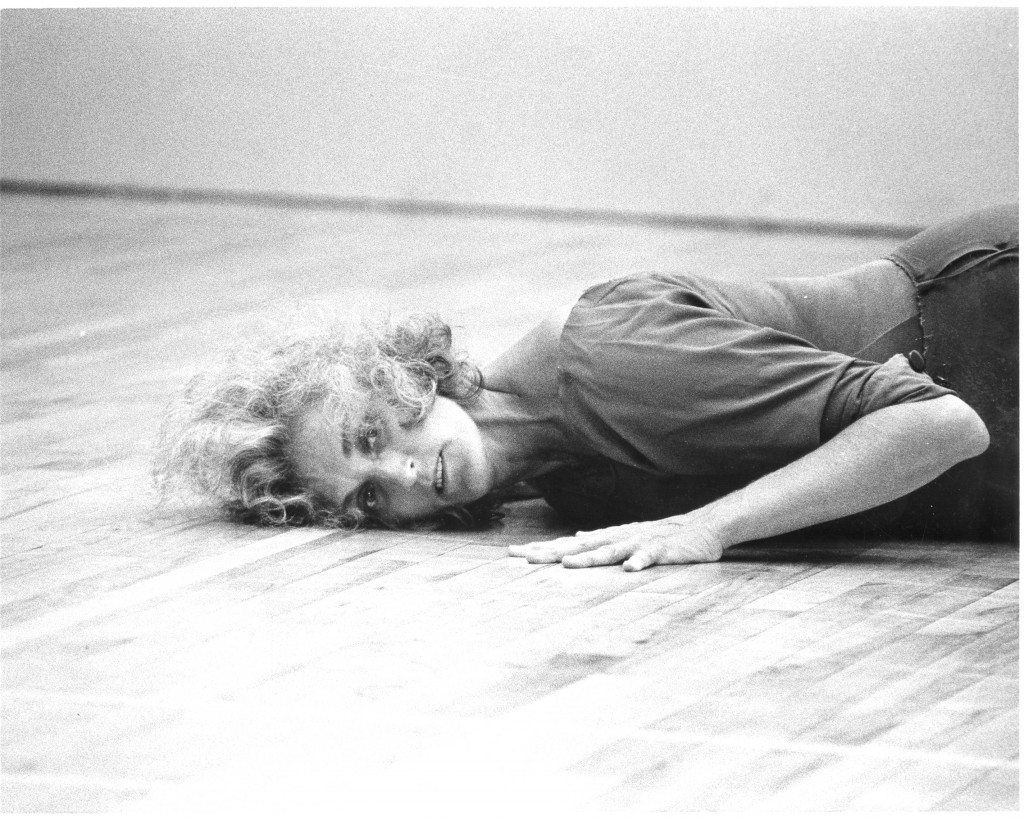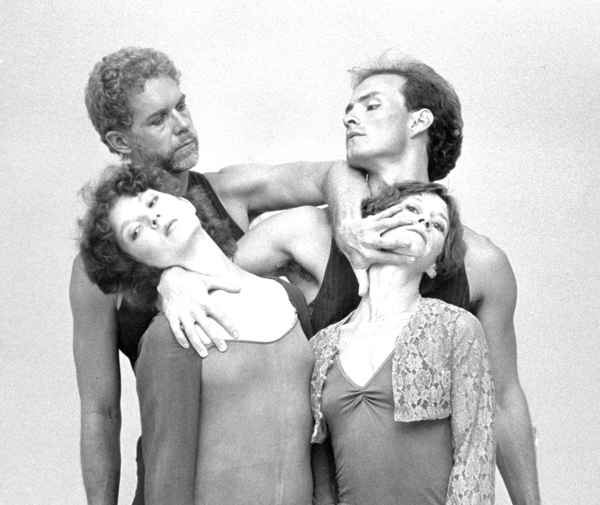Families are Forever
1981 – Families Are Forever is a four-part multimedia narrative presented at the Renwick Gallery of Art, Division of Performing Arts, Smithsonian Institution during the Memorial Day weekend May 28 and 29, 1981 or ?3 as a tribute to families remembered. Families are Forever is expressive of the unseen connections of families both backward and forward in time expressive of the subtle but powerful connections of families. The dynamic yet softly flowing movements combine with slides and narrative to explore the love and tensions that form family bonds.
Families Are Forever was also performed in GW’s Dorothy Betts Marvin Theatre June 16 and June 18, 1982 as part of the GW Summer Dance Workshop Performance Series. This version included an installation by Janet Saad Cook, music by Joe Clark, lighting design by Wm DeMull and costumes by the dancers.
Flyer text: “Families is a tightly woven dance expressive of the subtle but powerful connections of families. the dynamic yet softly flowing movements combine with slides and narrative to explore the love and tensions which form family bonds.” (Maida Withers)
Quote on the flyer: “Although Maida Withers’ new “Families Are Forever” is about ties that chafe as well as bind, it has a gentle reassuring tone…it is tightly constructed – it’s a dance that always knows where it is going.” Alexandra Tomalonis – Washington Post.
The original choreography, by Maida Withers, was created in 1982 on Maida Withers Dance Construction Company for stage presentation and adapted a year later for the performance at the Smithsonian’s Renwick Gallery, Grand Salon, on Memorial Day 1983.
Original Dancers: Frances Babb, John Bailey, Dale Crittenberger, Susan Jamieson, *Eric Withers, *Marc Withers, Maida Withers. Additional dancers for the second cast included Susan Bensinger, and Liliana Fortna
Music (flute and cello): Families Are Forever by Rogelio Maxwell.
1984 – Smithsonian Institution, American History Museum “Smithsonian Salutes Washington Dance”, Washington, DC: Rogelio Maxwell. Live cello and flute accompaniment to Maida Withers and the Dance Construction Company.
Marc and Eric Withers were 11 when they performed in this work.
Photographs for the flyer and press were by Dennis Deloria
Type design/layout concept for the flyer by Calvert.
Check tour: Dancers’ Collective Theater, Atlanta, GA; Temple University, Philadelphia, PA; Joy of Motion Dance Umbrella, Boston, MA.
Excerpt included on CBS TV Capital Edition Interview: http://maidadance.com/works/when-maida-moves-television-interview-cbs-washington-dc/
Reconstruction: Veiled Threat (2012): Dorothy Betts Marvin Theatre, Washington, DC https://vimeo.com/43991482
Part II – Original Cast: Veiled Threat: https://vimeo.com/35583218
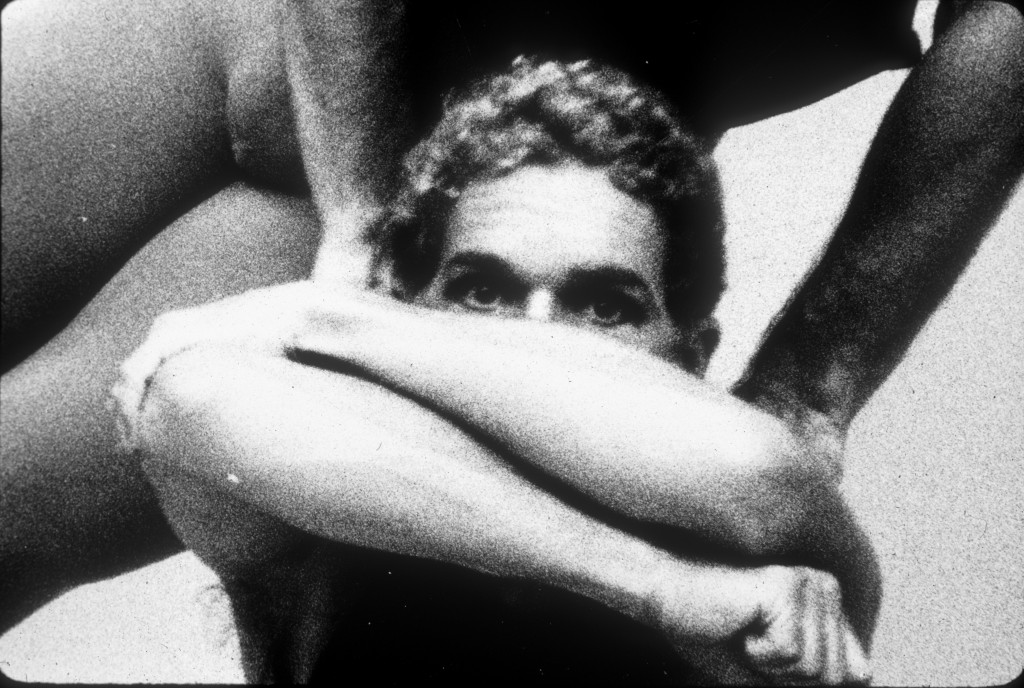
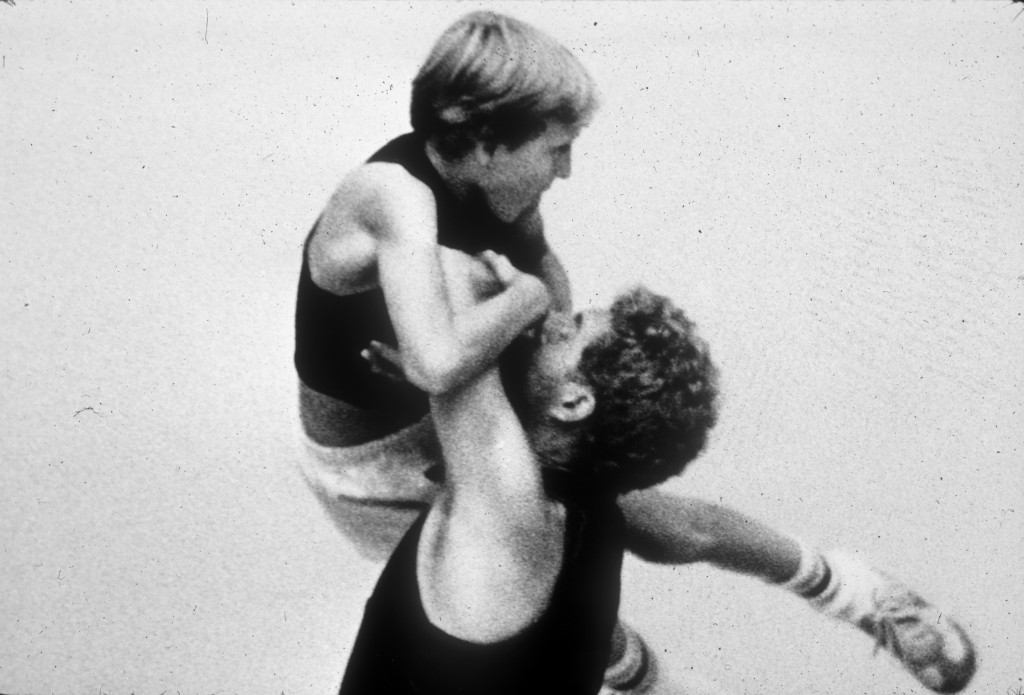
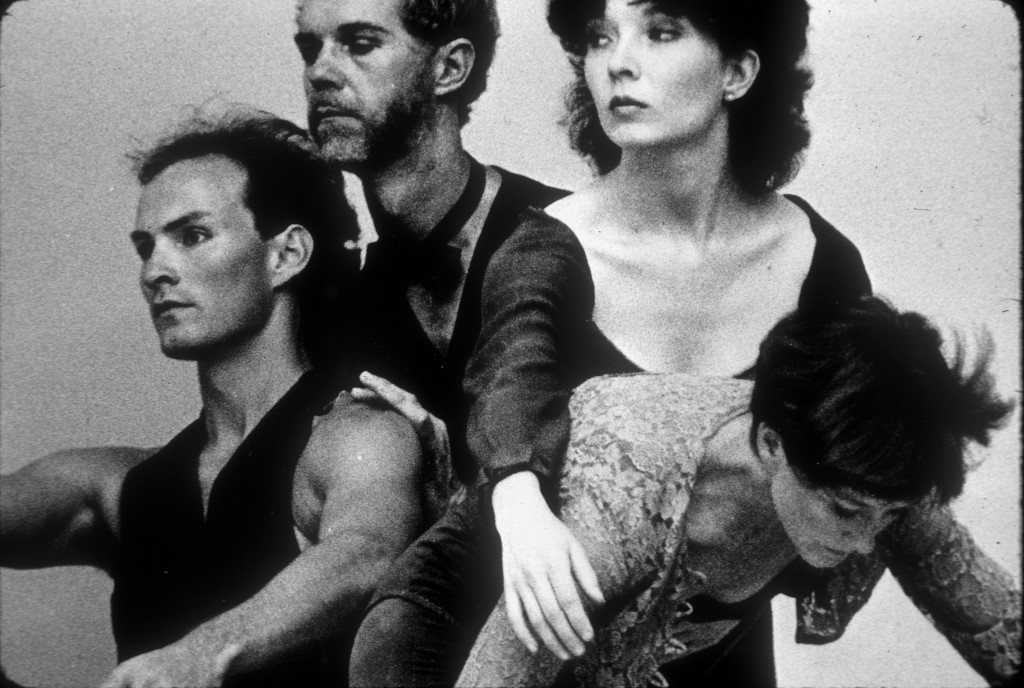
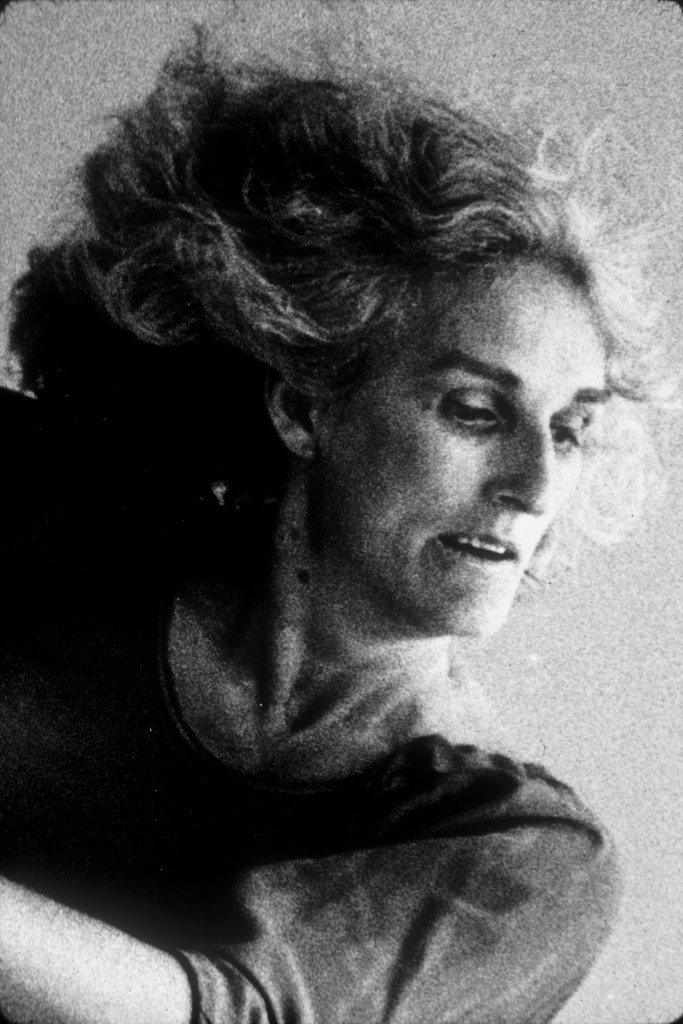
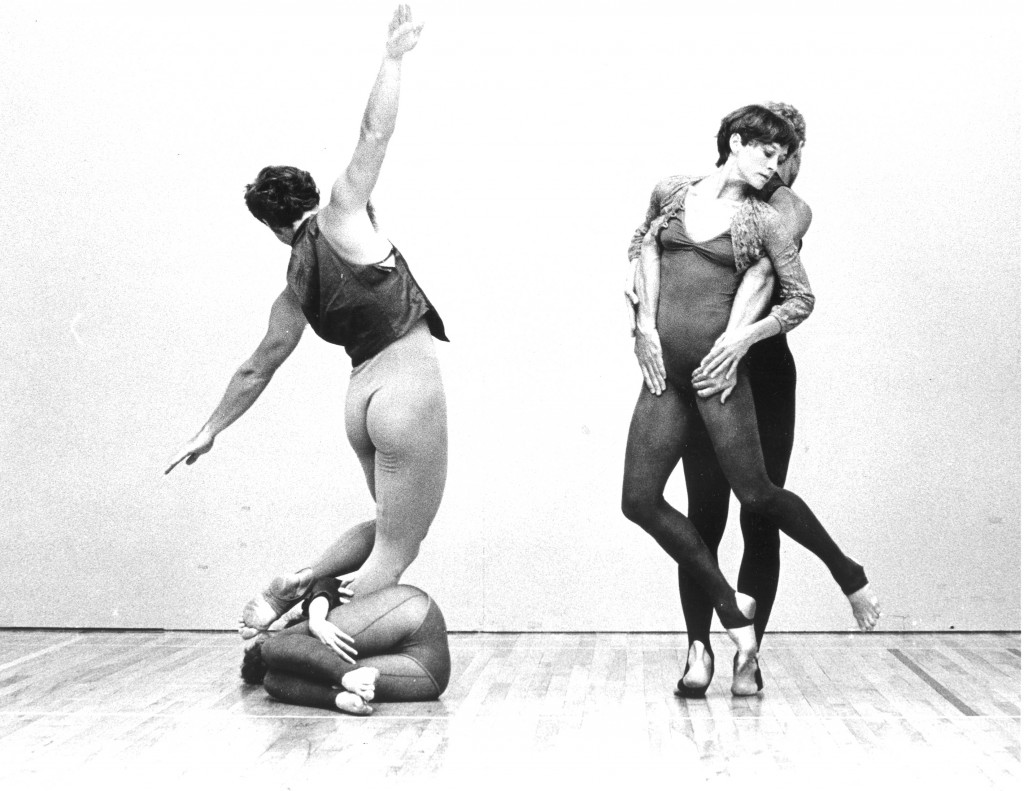
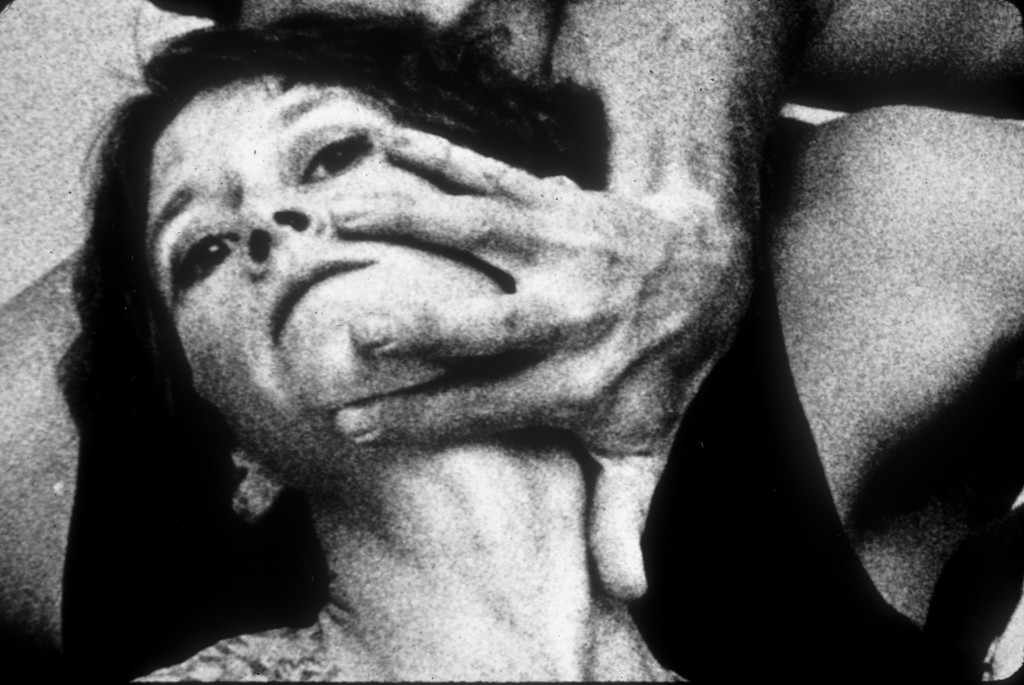
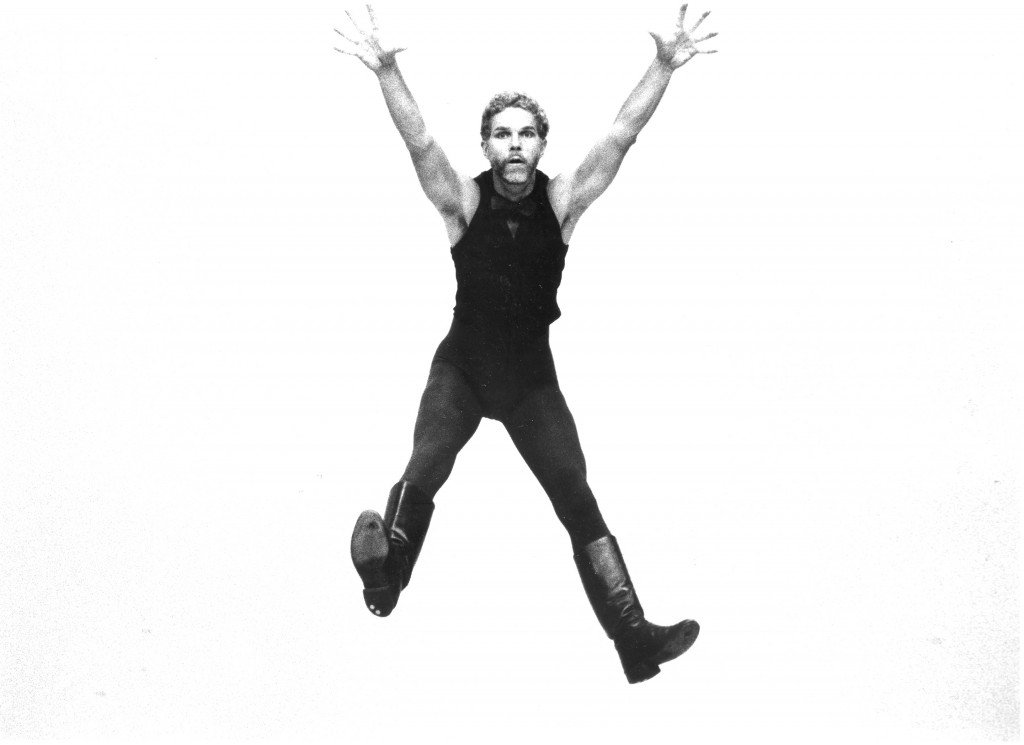
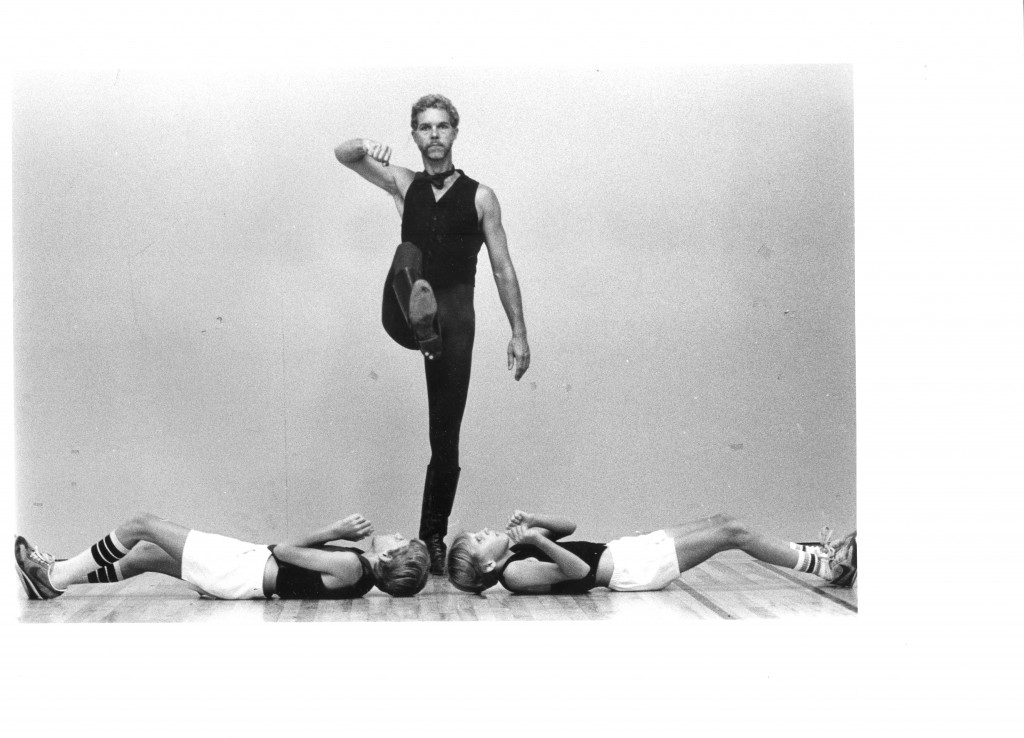
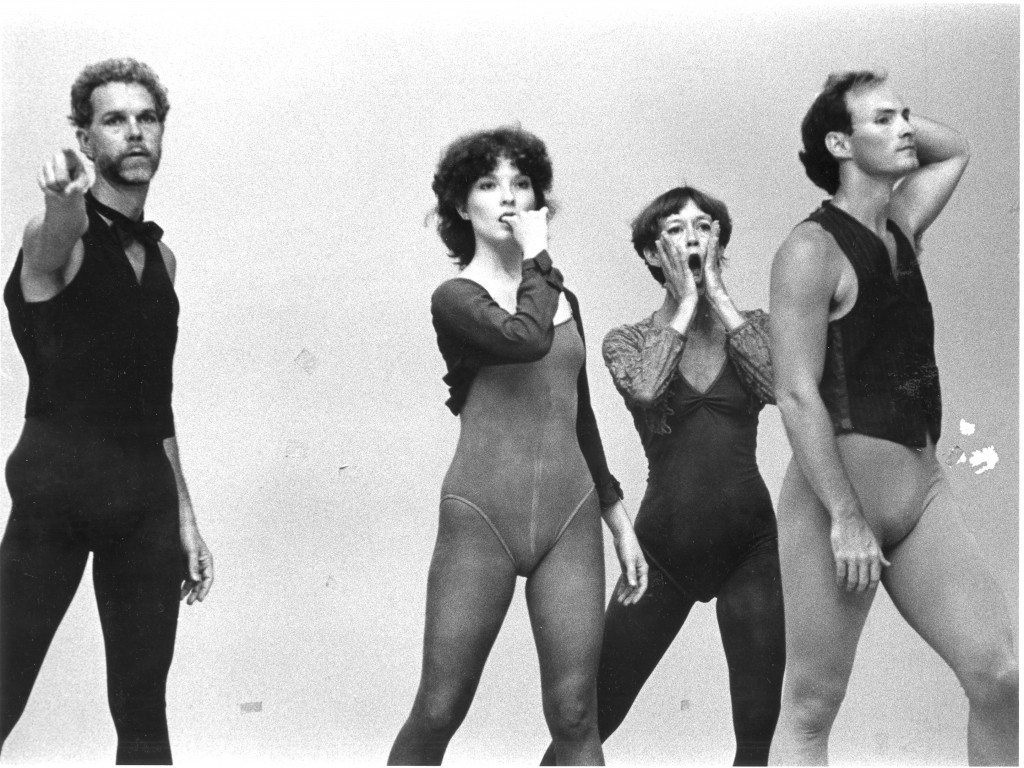
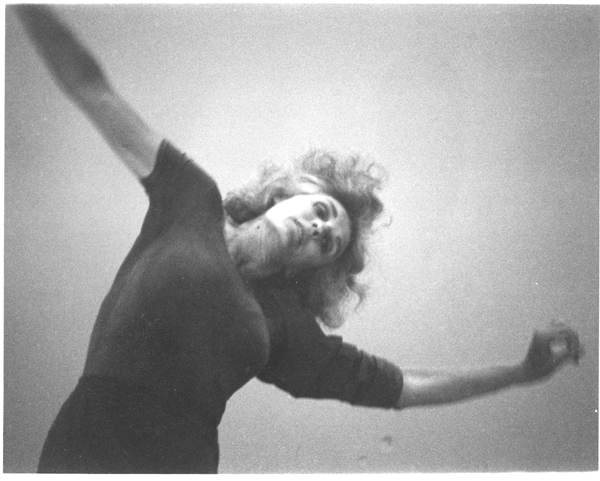
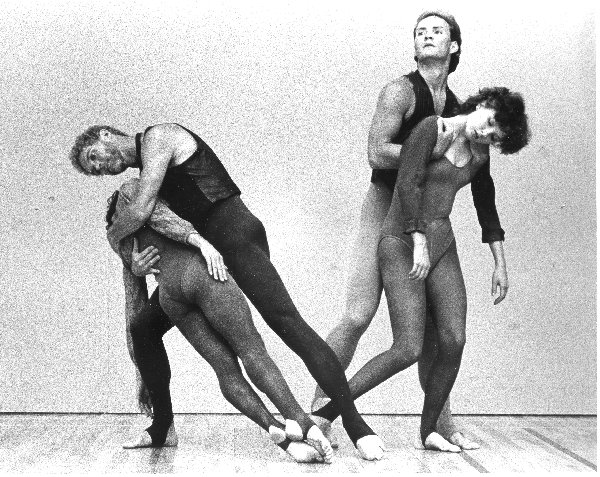
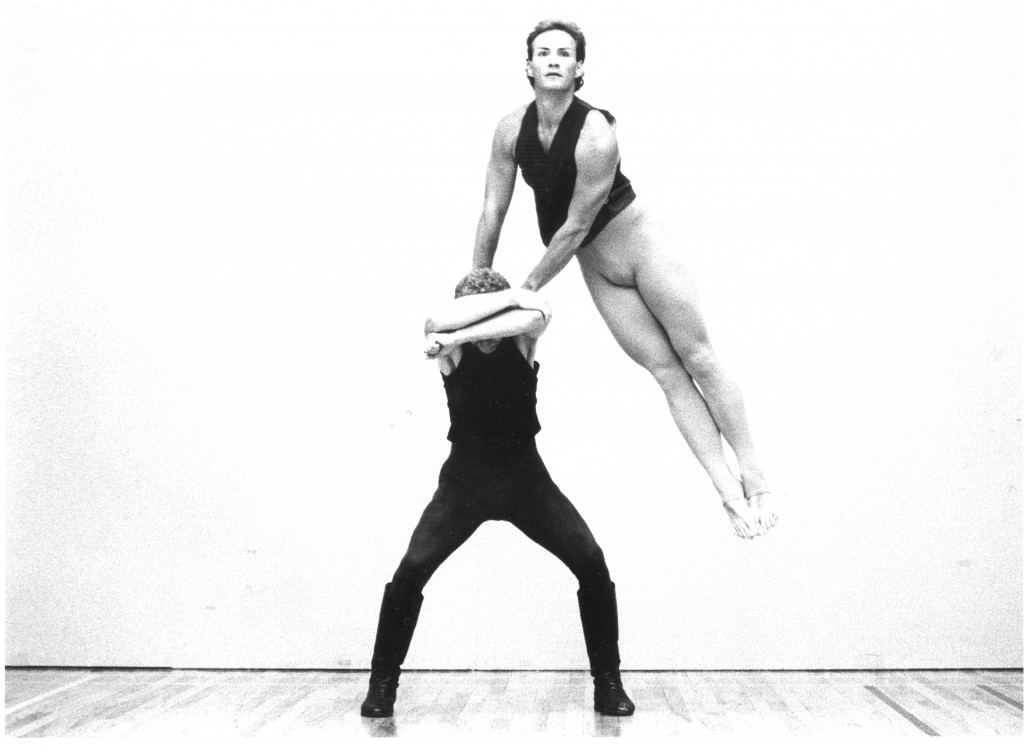
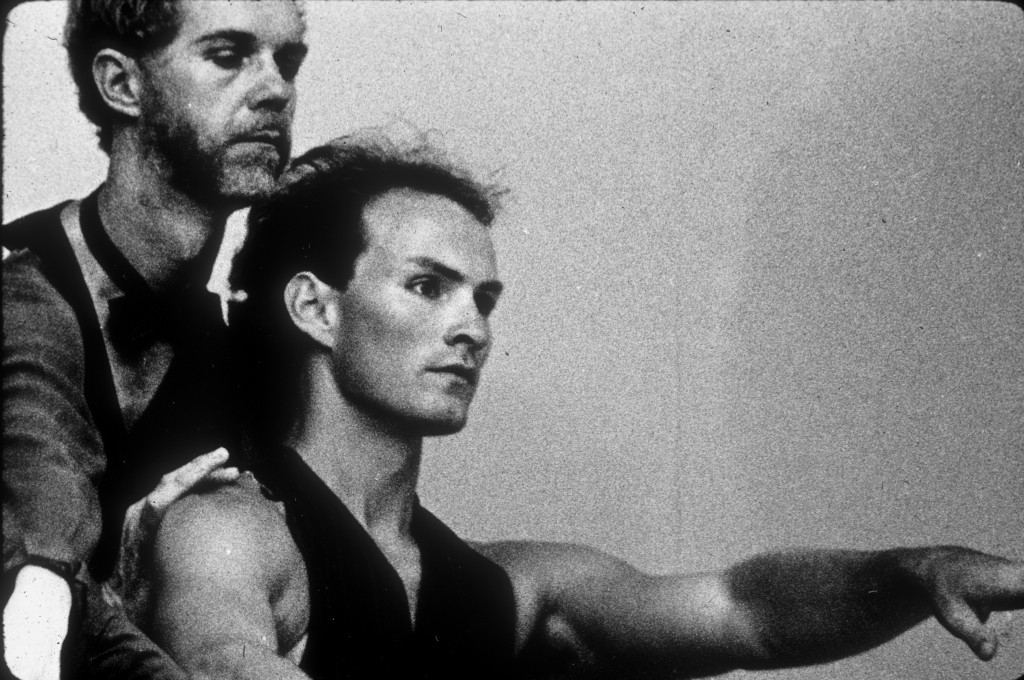
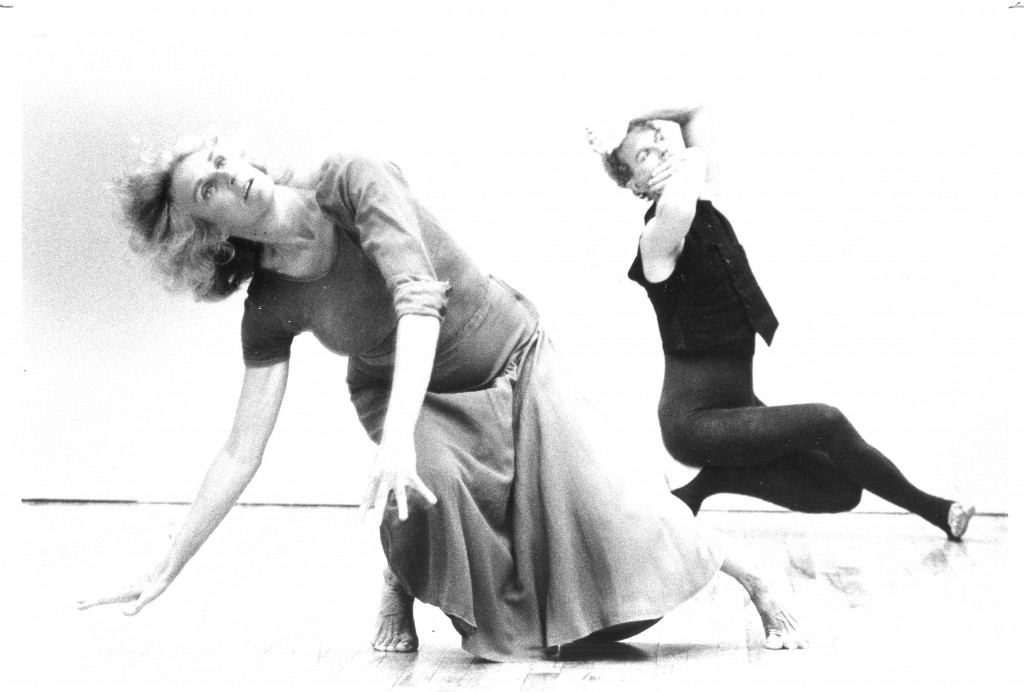
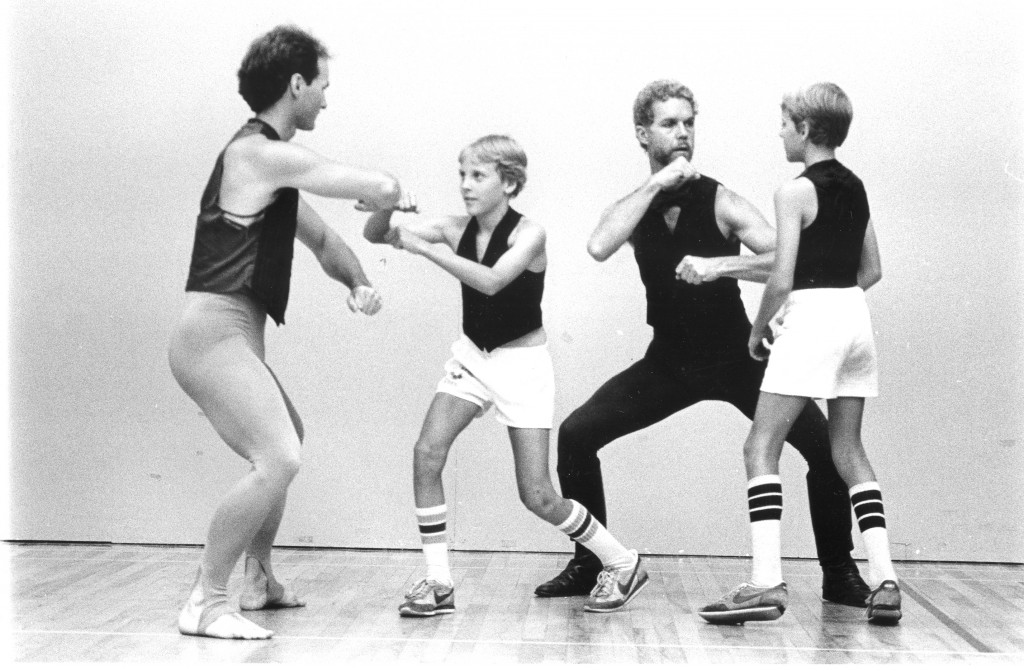
What the press is saying
"Although Maida Withers' new 'Families Are Forever' is about ties that chafe as well as bind, it has a gentle reassuring tone... it is tightly constructed - it's a dance that always knows where it's going." Alexandra Tomalonis
"Withers created ingenious choreography for the third chapter of Families Are Forever."
"The heirlooms in the Renwick Gallery out to have provided a propitious setting for Maida Withers' Families Are Forever," currently on view in the museum's Grand Salon. Through dance, gesture, and facial expression, Withers explores the forces that act between successive generations and between an individual and kin.
Among these forces are the imprint of parental taste and childhood memories of past fashions. That the nostalgic ambience of the Grand Salon did not contribute to the theatrical effect of the choreography was due to the arrangement of the room. The salon has ample space for dancing, but there is no place where viewers can sit, stand or squat to see all of the performance against the backdrop of paintings and objets d'art. One had to forget the place and focus on the members of the Dance Construction Company.
The cast of seven performers was drawn from diverse age groups. Two boys and two men dance the first of the work's four chapters. The thematic motions that twins Eric and Marc Withers dispatched casually as they ran and frisked appeared rigid as delivered by the first man, John Bailey. Wearing boots, Bailey asserted himself but squelched spontaneity and limited his own freedom of movement.
Dale Crittenberger, the second man, slid into the action mercurially. He polished the playful behavior of the boys into a far more facile tool than Bailey did, but not without the display of some stubborn traits. Joe Clark's music for "Families" has a militaristic beat in this first quartet.
The sound for the second chapter had a gamelan quality and the dancing was light in texture, with swinging gestures, tripping steps and wide leaps. Bailey, Crittenberger and three women - Susan Jamieson, Susan Short and Maida Withers-encounter each other in preludes to courtship. Sudden stooping, embraces and acts of staring at body parts serve as mimetic arrests to the lyrical passages.
Withers created ingenious choreography for the third chapter. Jamieson, Short and the two men move as a group through events about love and life. They are linked anatomically and kinetically. Although a surprising variety of partnering and individual chancing occurred, the group maintained a sculptured shape.
In a slow motion frieze to organ-like sounds, Withers led the two other women and Bailey in a representation of age, the painful spasms of disease and of collapse in death. Finally, all the dancers joined to state again some of the themes that humans repeat "forever."
Subtle in certain sections and schematically blunt in others, Withers' family pageant tries for epic status with great persistence. The performance is repeated today at 3 pm." George Jackson
"the most intriguing choreography occurs in the third section where two couples, intertwined like seaweed, explore endless variations on the theme of partnering. The partnering is physically gentle -- one never fears for the safety of the dancers - but often with a gestural undercurrent of malice. A cuddle melds into a stranglehold, a back offered for support jerks into a springboard. A barely audible recital of family genealogy competes for the attention of the audience...." Alexandra Tomalonis
"Maida Withers and her Dance Construction Company from Washington, D.C. will give a weeklong residency of choreographic workshops and classes today through Thursday at the collective. "Maida is a very well-known New Wave choreographer and we are thrilled to have her here (Atlanta)" said Mrs. McGhee (Found of the Dance Collective in Atlanta). rounding out their week in Atlanta, Ms. Withers and her company will perform Turf and Families Are Forever. "Families Are Forever" is a four-part multimedia narrative of the unseen connection of families, both backward and forward in time. " Helen C. Smith
"Maida Withers, Mover and Shaker of the Dance" Maida Withers is one of Washington's genuine movers and shakers. Professor of dance at George Washington University, director of the Dance Construction Company, ardent supporter of the avant-garde, mother of four, she bowls you over with her energy and radiance. Her dances, many of them evening-length works created in collaboration with poets, composers, sculptors, and other artists, are daring and experimental. Sensuous and spatially interesting, they often mix a variety of media into one evocative whole. Two of Withers' most recent works, "Turf" and "Families Are Forever" are on the Dance Construction Company's program this weekend at GWU's Marvin Theatre. "Turf" examines the relationship between sports and dance. As film images from the 1936 and 1976 Olympics appear on a backdrop, eight performers assume athletic stances, enacting warmups and summoning concentration and power. "Families Are Forever" with an original score by Joe Clark and set in a sculptural installation by Janet Saad-Cook, is a four part saga chronicling the joys and frustrations of blood relations. " Pam Sommers
Photo of Families dance
"Families, which premiered last year, has a clearer vision, with various groups of dancers abstractly evoking comlex inter-relationships. Flashed on the back of the stage were antique family portraits alternating with still photographs of the dancers, by Dennis DeLoria. Audio accompaniment included a reading of obituaries of long-deceased ancestors. Janet Saad-Cook's eerie white sculptures, suggesting skeletons and bare trees, hung from the ceiling. The work is anchored throughout with clever portrait-like poses of the dancers. Most dance involves collaborations of various artists. Picasso, Matisse, Stravinsky and numerous others have worked with choreographers to create works of art in dance. Withers continues this tradition of collaboration with her contemporary themes." Julie Van Camp
"This four-part work explores how issues of choice and acceptance figure into family roles. Some of the drama in the dance was sacrificed to the intimacy of the performing space, exposing the mechanics of the bolder, more stylized movements and giving them a slightly awkward look.
...The focus of the dance lies more on impression than chronology, but its images are of the struggle for identity in childhood and marriage, the process of learning to support and give way in adult relationships, and the experience of death. Connections and echoing gestures are wound through all the parts of the dance, though the movements range from lyrically curved and flowing to convulsive and spare. For example, in the opening section, Withers features her two young sons in the choreography, and their running and tumbling is later contrasted in the audience's memory with the interlocking, supporting movements of the adult dancers.
Families also contains a slide presentation consisting of a narrativ of sorts inserted around photographs. There are older, strikingly beautiful portraits of people of various ages, and contemporary shots of the Dance Construction Company dancers relaxing and working together. These are interspersed with phrases of kinship commonly expressed when family members father, representing the mythology and absolutes that everyone grows up with. The choreography, like the accompanying slides, is full of echoing suggestions about the inevitable influence of experience on character, and how attraction, conscience, and even separateness operate in such close and complicated relationships.
The way we knit together all the inherited and acquired information in our lives can be observed clearly and with some valuable distance in Families Art Forever.Most of the time the dancers moved through Families as though immersed in the richness of the material, and their belief in the choreography brough warmth to the performance." Anne Pierce
Three photographs by Dennis DeLoria of Families Are Forever (June 16,1982 - Premiere) Alexandra Tomalonis
"Another specifically "located" compoisiton is "Families Are Forever, by Maida Withers given its premiere performance at the Emanu-El Midtown Y, June 12 and 13, 1982. It, too, is decorated against the black teaser curtains and the cyc hover what look like bundles of frayed nerves, crossed wires, or scrawny branches; they're too slight to have real impact on the Y's huge stage. This is referred to in notes as both an "installation" and a "fiber environment"; other aspects of the environment include project slides of antique and contemporary family portraits.
The subject of this four-section work would appear to be Withers' ancestry. There are suggestions of narrative, following a family's history and passion from one generation to the next. At the start, Withers two young sons clammer on the company's male dancers, John Bailey and Dale Crittenberger; parallel costume details imply filial relationships. Cliches projected in typescript on the cyclorama provides glosses on the action throughout the (quite excessively long) balance of the work; recitations of statistics about births and deaths accompany adagio dances between men and women nudged by Joe Clark's tinkly percussion score. The men carry, push, and otherwise manipulate the women. Withers is from Utah, and has dressed her dancers in earth colors; one senses allusions in the work to an oppressive, patriarchal family structure.
The choreographer herself is an elegant, sturdy, broad-shouldered woman with gray hair, a strong dancer whose dignity and presence are somehow diminished by the sleek, pewter colored bodysuit she wears in Stall. the other work on this program. (See Stall for more) Elizabeth Zimmer
...Maida Withers and the Dance Construction Company will perform "Families Are Forever" in the Grand Salon at the Renwick Gallery, FREE.
"Families." choreographed by Withers, is a four-part dance about family relationships both past and present. The work premiered last summer to favorable reviews. As usual, Withers has woven her choreography around other media, in this ase slide projections and a narrative voice over. Family forebearers, projected on a screen look upon the dances as they enact the joys and pains of family ties.
The work is set to an original score by Joe Clark. It begins with two young boys whose play is interrupted by the entrance of two men (the boys grown up?) Nexti, two men and three women enlarge upon the theme of the physical relationships and emotional ties that bind families together. The eternal questions of who you resemble, and who you take after color everything we do.
the third section revolves around partnerships as two couples weave and mold themselves around one another, often supportive, sometimes not. The final section begins with a plaintive solo by Withers that ends with her joining or being enveloped by a group of the other dancers.
Withers has reminded us that the family can be the source of both joy and frustration, of loe and hate, and always a reminder of the struggle between dependence and independence. " Diane Baker
Dance of Discovery
Still Searching, Jan Van Dyke Returns to D.C.
"A former colleague filled in for the dancer (Jan Van Dyke sustained a foot injury), and the solo Van Dyke had prepared for herself was replaced by a splendid excerpt from Maida Withers "Families Are Forever," affectingly (sp) danced by members of Withers' Dance Construction Company." Alan M. Kriegsman
Van Dyke homecoming a reminder of legacy
... The static preoccupation with frozen imagery in these works (Van Dyke) was magnified by the contrast with the remaining work on the program, an excerpt from Maida Withers' "Families Are Forever." Performed with assured eloquence by members ofher Dance Construction Company (John Bailey,Dale Crittenberger, Liliane Fortna, Susan Short), the dramatically intense sequence was brimming with lyrial movement, inventive lifts and physically risky encounters for the ensemble." (Guest Performance, February 1985) Julie Van Kamp
"The concert bore her unmistakable stamp, a kind of aesthetic aroma compounded of equal parts wit, iconoclasm, and inventive curiosity. What binds together Withers' choreography is not stories, romance, sex, or sociology, but the sheer exhileration and imaginativ fallout of movement, movement interpreted in the widest and most liberated sense." Alan M. Kriegsman
"The choreographer herself is an elegant, sturdy, broad shouldered woman...a strong dancer with dignity and presence..." Elizabeth Zimmer
Artists and Collaborators
- Choreographer and Genealogy Text
- Dancers
- Original Music (check this to confirm)
- Visual Artist - Sculptor
- Photographs/Slides
- Costumes
- GW Production Coordinator
- Lighting Designer
- Technical Director
- Stage Manager
- Sound
- Projections
- Flyer Design
- House Staff
- Music - Cello (original music)
Other Performances
- Dancers Collective Theatre, Atlanta Georgia(map) on January 10, 1983
- Temple University Conwell Dance Lab, Philadelphia, PA(map) on February 10, 1983
- Joy of Movment Dance Umbella, Boston, MASS(map) on October 21, 1982
- Dorothy Betts Marvin Theatre - GW SummerDance Workshop Public Concert - 800 21st Street NW(map) on June 16, 1982
- Emanu-El Midtown Y, New York City, New York(map) on June 12, 1982
- Dance Place(map) on February 15, 1985

